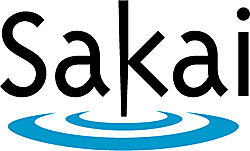
In general, open source refers to any program whose source code is made available for use or modification as users or other developers see fit. Open source software is usually developed as a public collaboration and made freely available.
Open source software has exploded in popularity over the last few years. As more states experience budget crunches, schools are looking for affordable solutions to provide the online access that teachers and students expect.
For those outside the techie culture, it may be hard to grasp the powerful idea this has become, and how it has forever changed the world of software development. The idea is simple; users have access to the source code for the software. This means users can look under the hood, see how it works, tinker with it, add parts and delete others to create a unique product that matches the user's needs.
For one, open source software is aligned with the academic
community’s values of freedom, peer review, and knowledge sharing. Just
as anyone can download and use open source software for free, users can
write new features, fix bugs, improve performance, or simply learn by
seeing how other people solved a programming problem.
Secondly, unlike expensive proprietary LMS's that require license fees and maintenance contracts, Moodle or Sakai cost nothing to download, and you can install it on as many servers as you want. No one can take it away from you, increase the license cost, or make you pay for upgrades. No one can force you to upgrade, adopt features you don’t want, or tell you how many users you can have. They can’t take the source code back from users.
Now, just because the source code is free does not mean there are no costs involved. Schools must elect to run the server for the open source software or they can pay vendors to host it. While open source software can be customized, this requires the time and skills of a software programmer.
| Pros | Cons |
|---|---|
| Customizable | Requires developers, programmers |
| School determines the upgrade schedule or if a new version is necessary | Hidden costs: hosting, support, training |
| Faster integration of new technologies | Fears of instability/scalability |
| Can be less costly than a commercial solution | |
| International appeal |

